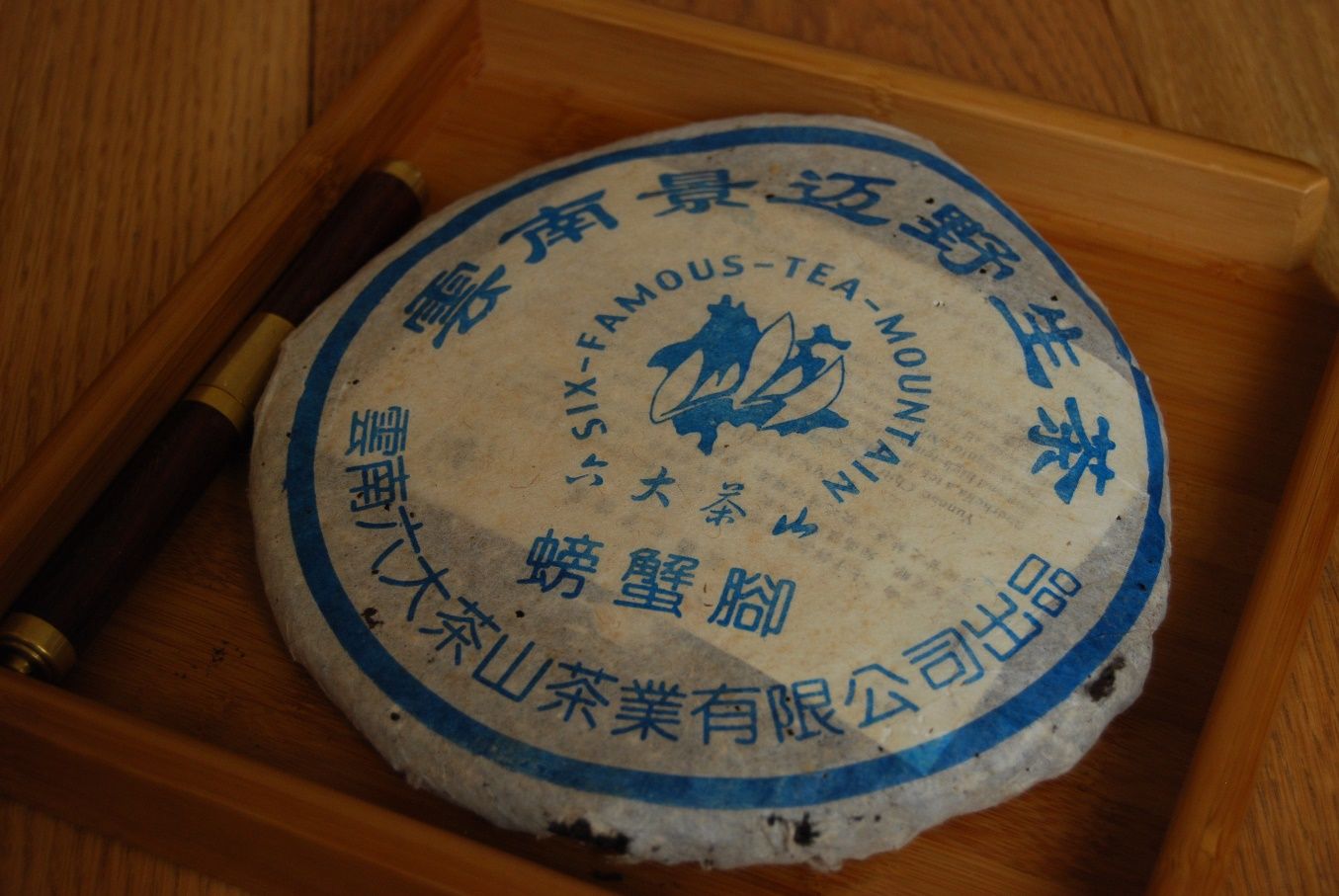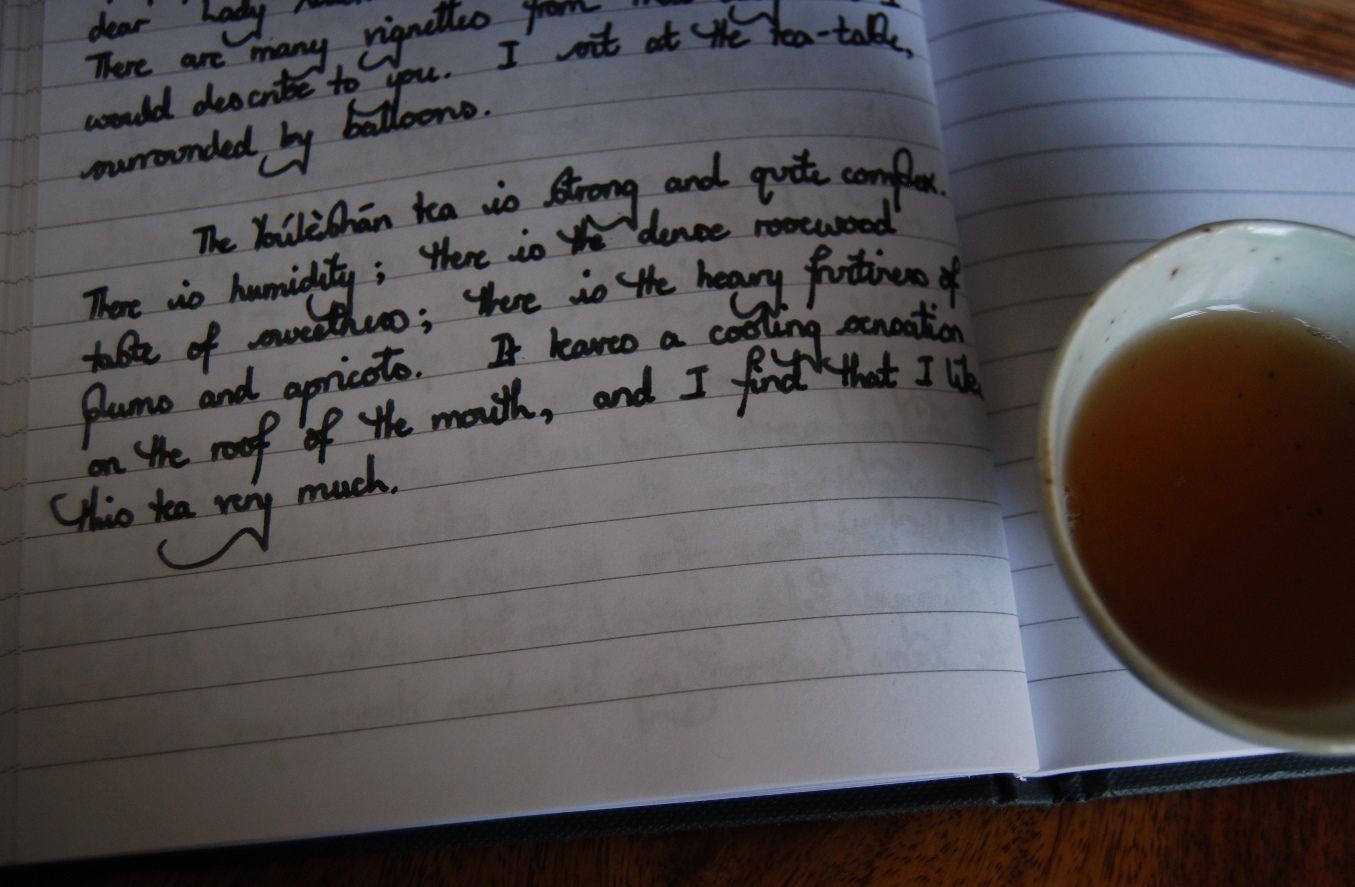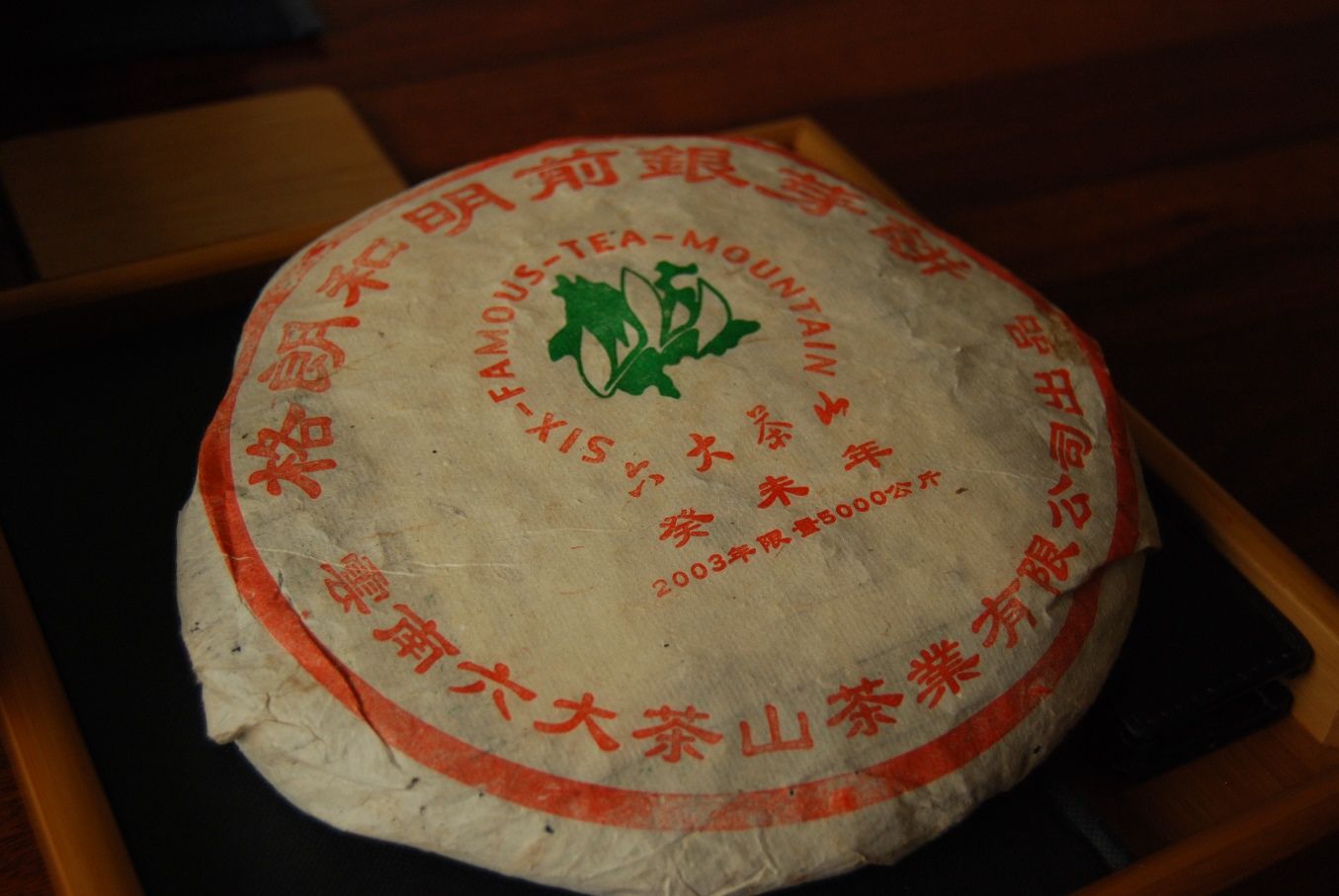Six Famous Tea Mountains, or "6FTM" to its friends: I have a big store of cakes from this factory, many from 2003, and most provided thanks to the generous auspices of Keng, teachum from Singapore. 6FTM are not makers of fancy cakes, but, back in the early 2000s, they were making cakes of such simple potency that they have aged rather well.
The 2003 6FTM Jingmai Pangxiejiao looks like a novelty cake (it is called "crab's feet"), but tastes really rather good. A recent session revealed that the crab's feet (a vine) impart a sharp and noticeable bitterness that is both complementary to the otherwise fuzzy-warmth of Jingmaishan, and which I somehow missed the first time around. (Notes have been added to the original article.)
Then, we have the...
2003 6FTM "Youle Gucha" which is much more canonical. That is, it's strong and warm, and has aged in Singapore's heat quite nicely. (More notes added to the original article.)
We also have the 6FTM known only as "Yunnan Qizi Bingcha" which is a little like seeing wine labelled as simply "red wine".
This is a fun cake, and one with which I wished to spend a little more time, after the whistle-stop introduction some years back. The aroma, revealed on opening the wrapper, is strong sweetness of the dark 'Banna variety.
This is not a "grand" tea, even by 6FTM standards, in that it has not been attributed to any particular region. This is confirmed by the fragmented, small leaves, which have been mixed with stems, huangpian [yellow flakes], and all sorts of grades. I like to call this kind of mix "rugged" or "robust", in the sense that it is something akin to a shaggy dog. Messy, but endearing.
The scent in the wenxiangbei starts quietly, and I wonder if it is a tired, old cake. The soup promptly slaps me "upside the heed" [sic], and we are rapidly disabused of all notions that this tea will come quietly. It is potent, sharp, heavy, sweet, and extremely violent. Naturally, this makes it rather appealing.
The fact that this tea still seems to be spoiling for a fight, even after a decade of aging, testifies to the raw power that early 6FTM cakes can contain. This cake has since gained some "blackness", in the general way of aged, generic 'Banna leaves, and which is rather satisfying. While it cannot be said to have a huigan per se, it has something of a proto-huigan. That is, there is a long, dense sweetness that sits in the throat - it just doesn't turn into the classical huigan.
I found this tea to be strong, and was (surprisingly) possible to overbrew, which is unusual for decade-old tea from Singapore, where the heat rapidly takes the edge off a tea. Later infusions developed the floral characteristics of "black" 'Banna tea, which was, again, a pleasant surprise for what I assume to be very mainstream pu'ercha.
Back then, even the "humble" leaves packed a serious punch. I like it a lot, and am pleased to observe that aging will probably only improve it further, given its innate violence and comprehensive density.
What fun!
Finally...
The 2003 6FTM Gelanghe (with detailed notes added to the article) is probably the best of the lot, to my mind. It has the qualities of a bigger tea, and yet is priced at sociable 6FTM levels. While I cannot say that I really understand "Gelanghe" [approx. ger-laang-her] as a regional characteristic, this cake is certainly doing well after its first decade, with the strength to go on to better things.








Gelanghe: Nannuo/Pasha
ReplyDelete